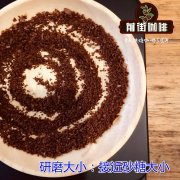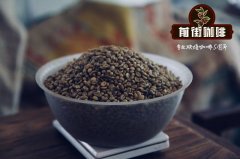Columbia Paradas Tolima Tolima Manor introduction _ Colombian Coffee Bean Brand recommendation

Professional coffee knowledge exchange more coffee bean information please follow the coffee workshop (Wechat official account cafe_style)
Micro-batch solarization of Colombian coffee Paradastolima--
Flavor description: citrus, papaya, caramel, medium acidity, medium alcohol thickness.
Brief introduction of producing area
Colombia is divided into 32 provinces, and Department of Tolima is located in the southwest, adjacent to the well-known boutique coffee producing areas of Huila and Cauca. Iwag, the provincial capital, Ibague.
In Tolima province, there are north-south Andes (M. Andes) and Cordillera (M. Cordillera), and between the two famous mountain systems is the Magdalena River (R. Magdalena), which runs from south to north.
The name Tolima comes from the earliest people who lived here, "Pijao people". In the language of this ancient people (Pijao word), tolima means "snow cover" and "snowed". It is not difficult to imagine that this distant land will also be home to high-quality coffee.
Tolima, adjacent to huila and cauca, is an area where many coffee-producing pilgrims need to make up their minds to travel. The road conditions here are not very ideal, and some of the talented people who have visited tolima all describe the bumps and hardships on the way to the car shop in their travels.
The farms in Tolima are generally slightly larger than those in other southern Colombian producing areas, ranging from 10 to 15 hectares. The cooperative approach is also popular here, where farmers send their small batches of fresh coffee and fruit to the cooperative's processing plant. Some farmers will also choose to deal with it on their own, making use of their own small-scale treatment facilities that can handle the harvest of the day. Carefully processed raw beans can be negotiated according to the cup test results, and a few batches that are outstanding will be kept as "micro batches", microlot, and sent to Bogota, the capital, for further cup testing. The rest of the raw beans are generally mixed and sold according to the cup test flavor.
Like other Colombian coffee producing areas, the classic treatment here is water washing, that is, wet treatment. Dry in the sun.
END
Important Notice :
前街咖啡 FrontStreet Coffee has moved to new addredd:
FrontStreet Coffee Address: 315,Donghua East Road,GuangZhou
Tel:020 38364473
- Prev

Introduction of beans from the list of Origin of Prada, Tolima, Colombia-Colombian Black Coffee recommendation
For more information on coffee beans, please follow Coffee Workshop (Wechat official account cafe_style). A thriving family organization of coffee farmers has formed the association de Productores Egolgicos Planadas (ASOPEP), one of the few certified Fairtrade and organic coffee producers in Colombia. No wonder people are in and around Planadas
- Next

Columbia Coffee beans colorful Candy _ Land of Diversity Colombian Coffee quality Competition
Professional coffee knowledge exchange more coffee bean information please follow the coffee workshop (Wechat official account cafe_style) this competition beans are Colombia's own organization of Colombia's raw coffee bean competition Land of Diversity winning beans. Colombia Coffee Quality Contest-land of diversity, in fact, this is equivalent to Colombia itself.
Related
- Detailed explanation of Jadeite planting Land in Panamanian Jadeite Manor introduction to the grading system of Jadeite competitive bidding, Red bid, Green bid and Rose Summer
- Story of Coffee planting in Brenka region of Costa Rica Stonehenge Manor anaerobic heavy honey treatment of flavor mouth
- What's on the barrel of Blue Mountain Coffee beans?
- Can American coffee also pull flowers? How to use hot American style to pull out a good-looking pattern?
- Can you make a cold extract with coffee beans? What is the right proportion for cold-extracted coffee formula?
- Indonesian PWN Gold Mandrine Coffee Origin Features Flavor How to Chong? Mandolin coffee is American.
- A brief introduction to the flavor characteristics of Brazilian yellow bourbon coffee beans
- What is the effect of different water quality on the flavor of cold-extracted coffee? What kind of water is best for brewing coffee?
- Why do you think of Rose Summer whenever you mention Panamanian coffee?
- Introduction to the characteristics of authentic blue mountain coffee bean producing areas? What is the CIB Coffee Authority in Jamaica?

